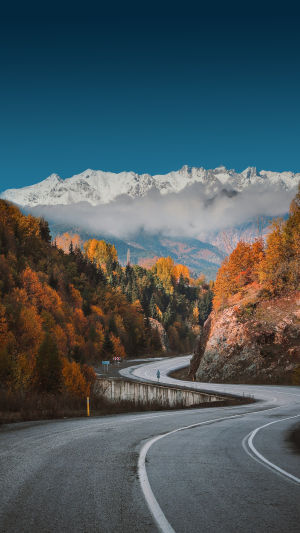When one envisions a serene and awe-inspiring natural landscape, the image of a majestic snow-capped mountain often comes to mind. These towering giants of the Earth possess a unique and ethereal beauty, captivating the hearts and minds of adventurers, poets, and nature enthusiasts alike.
Let us delve into the enchanting world of snow mountains, exploring their mesmerizing features, captivating allure, and the significance they hold in various cultures around the globe.
Grandeur in Height:
Snow mountains are distinguished by their staggering heights, reaching up into the heavens and piercing the clouds. These magnificent geological formations, often part of expansive mountain ranges, boast towering peaks that command attention and inspire a sense of reverence.
Whether it be the iconic Mount Everest in the Himalayas, the snow-clad Rockies in North America, or the pristine Alps of Europe, these giants of nature mesmerize us with their awe-inspiring verticality.
Pristine White Blankets:
The most striking feature of snow mountains is, of course, the pristine white blankets of snow that adorn their slopes and summits. These glistening snowfields create a breathtaking visual spectacle, transforming the landscape into a winter wonderland.
As sunlight dances on the crystalline surface, it illuminates the surrounding scenery, creating a magical ambiance that is nothing short of enchanting.
Glacial Splendor:
Snow mountains are often home to glaciers, immense rivers of ice that slowly carve through the rugged terrain over centuries. Glaciers add an element of grandeur to the mountain landscape, with their icy blue hues and colossal size.
These frozen giants shape the land, sculpting valleys and lakes as they advance and retreat, leaving behind a trail of awe-inspiring geological formations.
Biodiversity and Fragile Ecosystems:
Despite the harsh conditions, snow mountains are home to a surprising array of flora and fauna. Adapted to the extreme cold and limited resources, these hardy organisms flourish in their unique environments.
From resilient alpine plants that cling to rocky crevices to elusive mountain goats gracefully navigating steep cliffs, the biodiversity found in snow mountains is a testament to nature's tenacity and adaptability.
Cultural Significance:
Snow mountains hold deep cultural significance in many societies around the world. They are revered as sacred places, associated with gods and spiritual journeys. In some traditions, mountains are seen as symbols of strength, resilience, and enlightenment.
Mount Kailash in Tibet, for instance, is considered holy by four major religions and is believed to be the abode of Lord Shiva. These mountains become pilgrimage destinations, attracting devotees and adventurers seeking solace and spiritual enlightenment.
Playground for Adventure:
Snow Mountains offer a playground for thrill-seekers and outdoor enthusiasts. Skiing, snowboarding, mountaineering, and ice climbing are just a few of the exhilarating activities that draw adventurers to these icy realms.
The challenges they present, both physical and mental, test the limits of human endurance, fostering a deep connection between individuals and the untamed forces of nature.
Snow mountains are majestic marvels that captivate us with their towering presence, glistening white snow, and intricate ecosystems. They symbolize the power and beauty of nature while offering a playground for exploration and self-discovery.
From their spiritual significance to their ecological importance, these magnificent giants inspire a sense of wonder and leave an indelible mark on our collective consciousness.
Let us cherish and protect these natural wonders for generations to come, ensuring that the enchanting allure of snow mountains continues to inspire and awe us.





